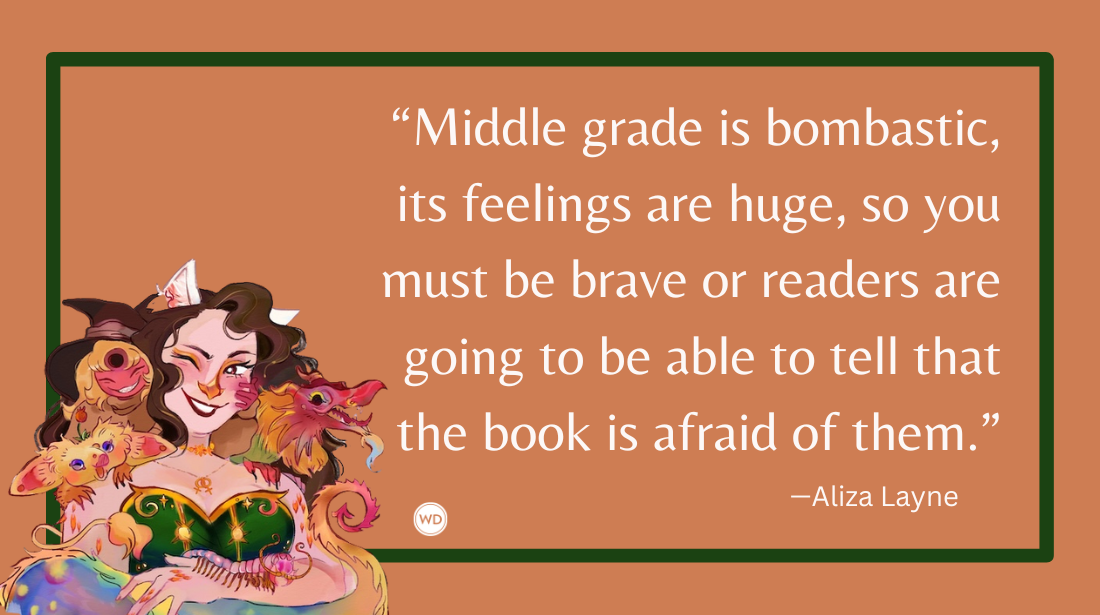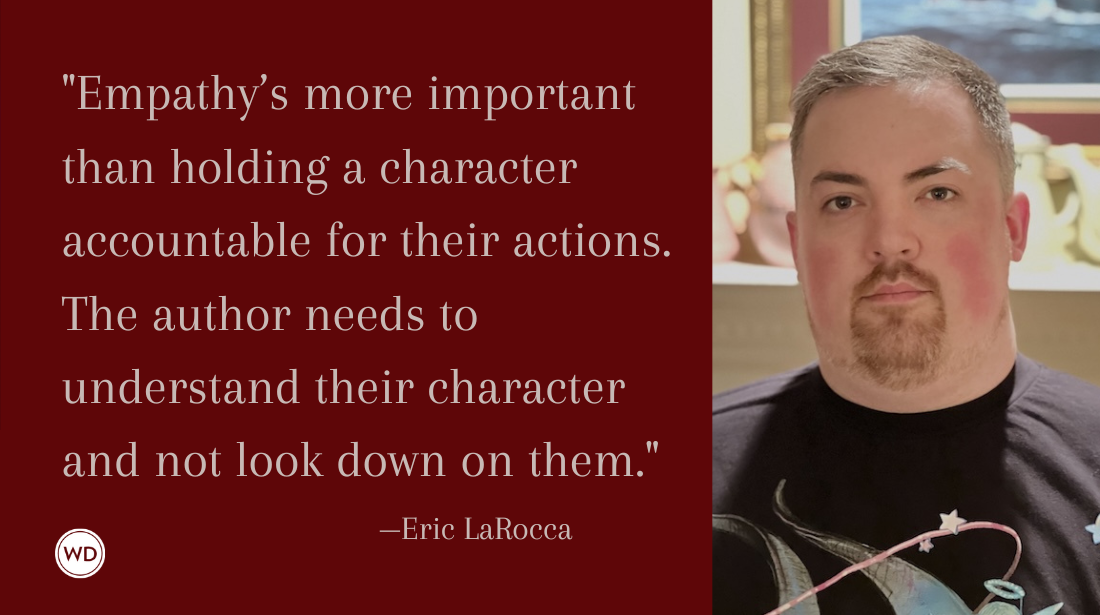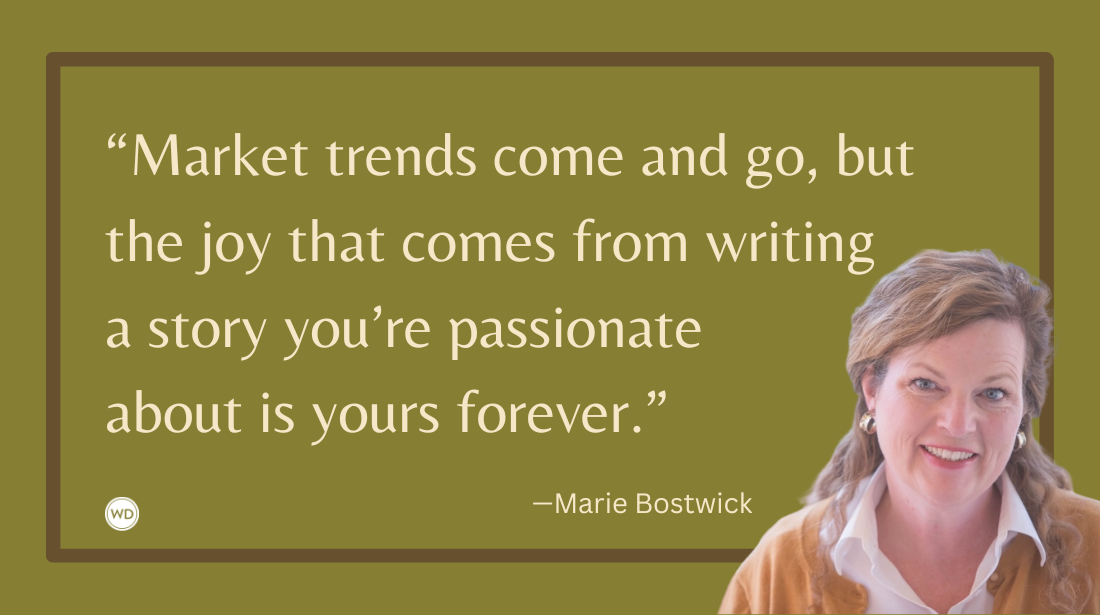Kate Messner: On Writing About the Many Masks of Grief
In this interview, author Kate Messner discusses how her own hiking journey helped inspire her new middle-grade novel in verse, The Trouble with Heroes.
Award-winning and New York Times bestselling author Kate Messner is passionately curious and writes books that encourage kids to wonder, too. She has written more than 70 books, which have sold more than five million copies in more than a dozen languages. Her titles include award-winning picture books like Over and Under the Snow, Up in the Garden and Down in the Dirt, Over and Under the Pond, The Brilliant Deep, and How to Read a Story; novels that tackle real-world issues like Breakout, Chirp, and The Seventh Wish; mysteries and thrillers like Capture the Flag, Eye of the Storm, and Wake Up Missing; the Fergus and Zeke easy reader series; the popular Ranger in Time chapter book series about a time-traveling search and rescue dog; and the History Smashers series, graphic nonfiction aimed at smashing historical myths.
Kate’s books have been New York Times Notable, Junior Library Guild, Indie Bound, and Bank Street College of Education Best Books selections. Her novel The Brilliant Fall of Gianna Z won the E.B. White Read Aloud Medal, and her science picture books have been finalists for the American Academy for the Advancement of Sciences/Subaru SB&F prize for excellence in science writing.
Before becoming a full-time writer, Kate was a TV news reporter as well as an educator who spent fifteen years teaching middle school English. These days, she splits her time between Lake Champlain and Southwest Florida, and is a proud “Adirondack 46er” having summited all 46 Adirondack High Peaks between book deadlines. Follow her on Bluesky, Facebook, and Instagram.
In this interview, Kate discusses how her own hiking journey helped inspire her new middle-grade novel in verse, The Trouble with Heroes, her advice for other writers, and more.
Name: Kate Messner
Literary agent: Jennifer Laughran, ABLA
Book title: The Trouble with Heroes
Publisher: Bloomsbury
Release date: April 29, 2025
Genre/category: Middle-grade novel in verse
Previous titles: Breakout, The Seventh Wish, Chirp, the History Smashers series, and many more.
Elevator pitch: On the verge of failing seventh grade, Finn Connelly vandalizes a cemetery, destroys the headstone of a legendary local mountain climber, and finds himself sentenced to hike all 46 Adirondack High Peaks in a single summer.
What prompted you to write this book?
I started writing The Trouble with Heroes the same year I started my own quest to climb all 46 Adirondack High Peaks. Unlike Finn, who has to climb them in a single summer, I stretched the challenge out over eight years, often scribbling poems on summits and overlooks. Somewhere along the way, Finn’s voice emerged in those poems, and I found myself writing a novel about an angry, snarky seventh grader who’s climbing the mountains not by choice but because it’s the only way he can get out of trouble.
How long did it take to go from idea to publication? And did the idea change during the process?
This book has been almost 10 years in the making. There were lots of false starts along the way, and at one point, when I realized that Finn’s story would be best told in verse, I put it away for almost two years because I realized I wasn’t a strong enough poet yet to pull it off. I worked on my craft, kept scribbling poems on mountains, and finally hit my stride just as the COVID-19 pandemic was beginning. I won’t share too many spoilers, but that had a huge impact on the story and helping me to understand Finn’s anger and grief in a way that I hadn’t before.
Were there any surprises or learning moments in the publishing process for this title?
While The Trouble with Heroes is written mostly in verse, it’s a multi-model novel that also includes letters, text messages, recipes (for cookies named after mountains!), choose-your-own-disaster sequences, and photographs from Finn’s climbs. This makes for a much more involved design and layout process—one that really brings the publishing team into the storytelling. Sometimes, I’d get a set of page proofs and see that the designer had created a special letterhead for one of the characters’ letters or spaced out the text messages in a way that gave me a new idea for how to make the writing on that page even more impactful.
Were there any surprises in the writing process for this book?
Yes! Up to this book, I’d always written scenes for my novels in order. First the opening, then the middle, and then the end. But with this project, poems often came to me out of order. I’ve been writing long enough to trust my process, even when that process diverges from the way I’ve written in the past, so I rolled with it until eventually, I had a Scrivener file with about 70 poems. It was at that point that I sat down to arrange them in some semblance of storytelling order so I could see where the gaps were and makes notes. I ended up with a list of poems-that-still-need-to-be-written, and after they were crafted slotted into the spaces, I’d left for them, I finally had a completed draft and could start revising.
What do you hope readers will get out of your book?
The Trouble with Heroes is a lot of things—an adventurous love letter to the Adirondacks, a story about hiking and mentors, heroes and vandals, fathers and sons. It’s also about grief and the many masks it wears, showing up as sadness or anger or snark. If you consider the times we’re living through—a pandemic, political unrest, climate disasters—very few young people will make it to adulthood untouched by grief. So, I hope this will be a book that they read first, to enjoy the adventure and humor of Finn’s story. But I hope it’s also a story they’ll hold in their hearts for when they need it later on, when they’re experiencing all the changing emotions of suffering a loss and want to know it’s okay, they’re not alone.
If you could share one piece of advice with other writers, what would it be?
Don’t wait for inspiration to write. Just show up regularly, ready to do the work. Write something. It doesn’t have to be great or even good. Just start and see what happens. If you wait for that magical moment when there are no interruptions and conditions are perfect, then a) you may be waiting a very long time and b) you’ll miss out on all of the wonderful, weird ideas that show up when we let go of the idea of crafting perfect prose and just play. I believe that true inspiration is real, and an absolute gift when it shows up. But it’s far more likely to make an appearance when you’re already at your laptop or notebook, working and ready to meet it.
Robert Lee Brewer is Senior Editor of Writer's Digest, which includes managing the content on WritersDigest.com and programming virtual conferences. He's the author of 40 Plot Twist Prompts for Writers: Writing Ideas for Bending Stories in New Directions, The Complete Guide of Poetic Forms: 100+ Poetic Form Definitions and Examples for Poets, Poem-a-Day: 365 Poetry Writing Prompts for a Year of Poeming, and more. Also, he's the editor of Writer's Market, Poet's Market, and Guide to Literary Agents. Follow him on Twitter @robertleebrewer.








